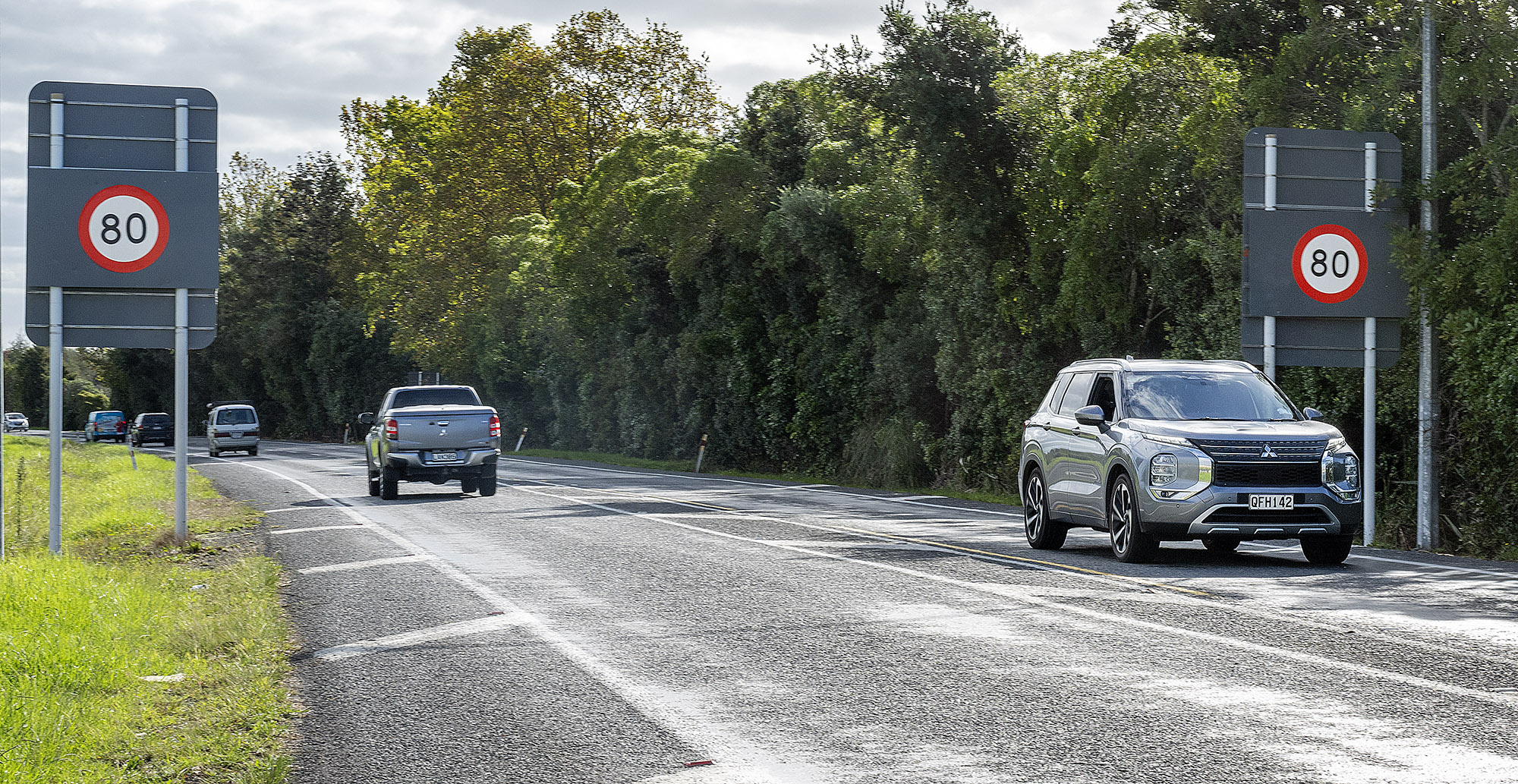State highway speed limits back to 100kmh

.
State Highway 30 between Whakatāne and Rotorua will return to a 100kmh speed limit by July, finalising a long and frustrating process for road users in the Eastern Bay.
The NZ Transport Agency this week released its final decisions having undertaken another round of consultation earlier this year on 49 sections of the state highway network.
Local MP Dana Kirkpatrick has welcomed the announcement of the speed reversals, which she says restores a “sensible” speed limit to large tracts of state highway in the Eastern Bay.
“The result [of the consultation] was emphatic – nearly 90 percent support for returning the route from SH30 Lake Rotoma to Te Teko and then on to Awakeri and Whakatāne to 100kmh.
“There will be reduced speed limits in the townships of Te Teko and Awakeri as is appropriate,” she said.
There was only 11 percent support for retaining the current lower speed limit between Lake Rotoma and Te Teko, 10 percent support for retaining the 80kmh limit between Te Teko and Awakeri, and 12 percent support for retaining it between Awakeri and Whakatāne.
“There have been more consultation periods than I care to remember, and all have said the same thing – this road needs to be at 100kmh where appropriate, said Ms Kirkpatrick.
“I want to thank the people who continuously reminded me that we needed to get this done and lodged their submissions time and time again to get to this point.”
In late January, NZTA announced the reversal of speed limit reductions on 38 other sections of the state highway network, including the section between Gateway Drive and the Landing Road bridge. This will revert to 80kmh by July 1. It is currently 60kmh.
Whakatatāne District Council made a submission to the latest round of consultation seeking that this section remain at 60kmh, and that the stretch between Shaw Road and the Tauranga turn-off stay at 80kmh.
Since news of the impending speed reversal between Whakatāne and Rotorua broke on Wednesday, the response has been overwhelmingly in support with comments such as “about time”, “common sense prevails” and “great news” flooding social media.
However, some people said they would have liked to see the limit stay at 80kmh on the outskirts of Whakatāne, from The Hub and Kope Drain Road.
One woman noted that pulling out from Thornton Road towards Whakatane in mid-to-heavy traffic was going to be a “nightmare” again, trying to get up to speed.
Rhys Bugden, who lost his wife in a head-on crash near Hells Gate in 2019 when another driver crossed the centreline, had mixed feelings about the change.
“I was glad when it went to 80kmh, but thought some parts could stay at 100kmh,” he said. “I feel where the accident happened, it should stay at 80kmh.
“Maybe just drive safely and think about those that don’t have their loved ones anymore. It happens so quickly and then it’s all over.”
James Morley noted the biggest issue with the speed reduction was that rather than decreasing speeds in the areas they needed to be reduced, there had been a blanket reduction.
“No one has an issue if the areas which should be reduced, are, but seriously, as an example, once you get passed Te Teko towards Whakatāne, it’s stupid to be an 80 zone.”
Will Jago said he had always been against the 80kmh reduction, which seemed senseless when country roads branching off the highway remained at 100kmh.
He would comment on the stupidity of it as often as he could, especially if there were accidents in the lowered zones.
But he said according to statistics, the accident rates had dropped, as had fatalities.
“Something like 25 fewer fatalities across those areas. Admittedly the road toll has gradually been dropping compared to population growth anyway, but even if 20 lives are saved that’s 20 families who haven’t had their lives and worlds torn apart.”
Barbara Aim said it was about time.
But people needed to learn to drive defensively, considerately and are able use their own common sense.
The “it’s the driver, not the road” sentiment was echoed by many.
James Morley said instead of blaming the road, an inanimate object, blame should be laid where it belonged – with the driver.
“Of course, we might have health or mechanical breakdown, but 99 percent of accidents are driver error and a high percentage of those is simple distraction,” he said.
“Now all they need to do is teach people how to drive,” said another man. “It’s not the speed limit; it’s how people drive that’s the problem.”
On a lighter note, many drivers wondered if they could be reimbursed for the speeding fines they had received since the speed limit was reduced.
Ms Kirkpatrick said SH30 was a key strategic route in the roading network and a major freight highway.
“If we are to get this country moving, we must ensure that speed limits and roading infrastructure are appropriate and supporting our goal of productivity and efficiency,” she said.
“I read the more than 700 submissions received the first time this was consulted on in 2022 and most people opposed it then.
“It has since been a struggle of bureaucratic proportions to get the agency to see sense.
“We campaigned on this in the election, and it has been a priority for me to get this across the line.
“I have had to push hard to make sure the Eastern Bay has been heard in its desire to have an efficient and appropriate freight and motorist route, and I am delighted we have delivered on an election promise.”